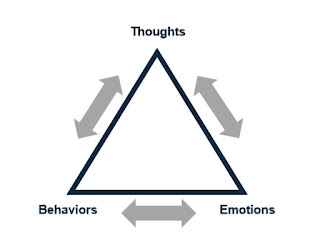The Danger of Assumption: Unlocking the Power of Pause and Perspective
We’ve all had that moment : a friend doesn’t text back, a colleague misses a deadline, or a stranger’s tone feels sharp. Instantly, our minds craft a narrative, filling in the blanks with worst-case scenarios. It’s human nature – but it’s also dangerous. Assumptions can spark unnecessary conflict, stress, and misunderstandings.
Let’s dive into why our brains are wired this way, how it affects us, and most importantly, how we can break the cycle.
The Brain’s Shortcut to Chaos
When faced with incomplete information, the prefrontal cortex (PFC), our brain’s decision-making hub, tries to “help” by filling in the gaps. Using past experiences and patterns, it predicts outcomes, often steering us into murky waters.
And here’s the kicker: our brains love being “right.” The dopaminergic reward system reinforces the conclusions we reach, even when they’re wrong. This creates a false sense of certainty that drives reactive behavior.
Ever felt absolutely sure someone was ignoring you, only to find out they were stuck in traffic?
That’s the PFC ( Prefrontal Cortex of your brain ) playing tricks.
Why Emotions Hijack Logic
When assumptions trigger a perceived threat
– like disrespect,
– rejection, or
– betrayal
the amygdala takes the wheel. This emotional powerhouse ignites our fight-or-flight response, drowning out logical reasoning. Suddenly, cortisol levels spike, and boom: we lash out, defend, or withdraw.
The problem? This emotional reaction often creates bigger issues than the initial misunderstanding.
Assumptions vs. Empathy: A Battle for Connection
Assumptions don’t just distort reality – they block empathy. When we jump to conclusions instead of asking for clarity, the part of our brain responsible for empathy (called mirror neurons) doesn’t get activated. These neurons help us feel and understand what others are going through, but assumptions stop that connection from happening.
The result? We focus on our feelings and neglect the other person’s experience.
By pausing to verify, we activate the insula, the empathy-processing region of the brain.
This allows us to reframe the situation, reducing emotional intensity and fostering connection.
Real-Life Wake-Up Calls
Here are a few more examples of how unchecked assumptions can backfire – and the powerful lessons they teach:
1. A Professional Slip-Up
You assume a colleague missed a deadline due to carelessness and fire off a scathing email. Later, you learn they were handling a family emergency.
Lesson: Pausing to ask a simple “Is everything okay?” can save relationships and reputations.
2. Misreading Social Cues
At a café, a customer observes a couple arguing and assumes abuse, calling the authorities. The argument turns out to be about a book they’re writing together.
Lesson: Observing doesn’t mean understanding – verification is key to meaningful action.
3. Family Fallout
A parent grounds their child for “ignoring” texts, only to discover their phone was broken. Trust is shattered over a misunderstanding.
Lesson: Asking, “Why?” before reacting can preserve bonds.
4. Customer Misjudgment
A customer posts a bad review, assuming staff laziness, only to learn the café was understaffed due to illness.
Lesson: Behind every story is another story – seek it before drawing conclusions.
The Pause That Transforms
Here’s how to shift from assumption to clarity:
2. Inquire: Ask open-ended questions. “Is something going on?” shows curiosity, not judgment.
Why It’s Worth It
Breaking free from the assumption trap isn’t easy, but the rewards are immense:
- Stronger relationships built on trust and understanding.
- Reduced stress from fewer emotional overreactions.
- Deeper connections through empathy and open communication.
So next time you’re tempted to assume, remember: your brain may take shortcuts, but you hold the map. Pause. Verify. Empathize. You’ll be amazed at how much clearer – and kinder – life becomes.




No comments:
Post a Comment